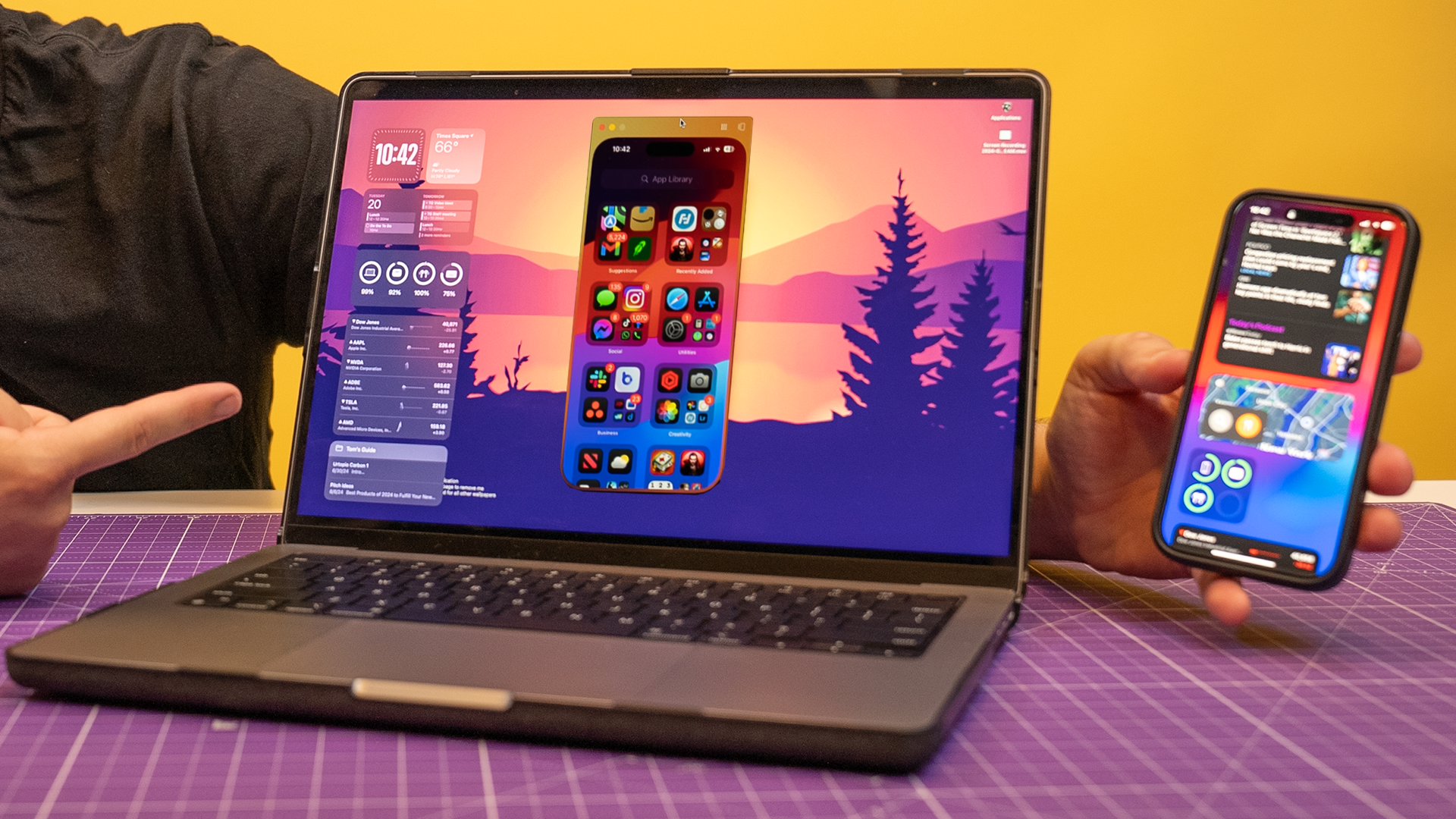
Apple has introduced one of its coolest ecosystem features with iOS 18 and macOS Sequoia — iPhone Mirroring. iPhone Mirroring is hands down one of the most exciting things to come out of this year's OS public betas , and honestly, it’s become one of my go-to tools.
As long as you've downloaded the iOS 18 public beta and installed the macOS Sequoia public beta on compatible devices, you can now access your iPhone directly from your Mac. Unlike Apple Intelligence features, which require an iPhone 15 Pro or Mac with Apple silicon, iPhone Mirroring works on any pair of devices that support the latest software versions.
I've found that iPhone Mirroring is useful for checking notifications, running mobile apps, or even playing games, all without having your phone physically in hand, or even in the same room. Check out my full YouTube video about iPhone Mirroring on Mac to see how the feature works, plus the major aspects of it that I like and I don't like. Or, read on below to learn more about how to use iPhone Mirroring now.
How to use iPhone Mirroring
Once you have the betas installed on your iPhone and Mac, here’s how to set it up iPhone Mirroring on your Mac. Note that both devices need to be on the same Wi-Fi network with Bluetooth enabled.
- With your iPhone near your Mac, you should now see an icon Mac's Dock called iPhone Mirroring. Open it.
- Click Continue.
- On your iPhone, unlock it.
- Back on your Mac, click Get Started.
- With the iPhone locked, open iPhone Mirroring on the Mac.
- The first time, you’ll be asked if you want to authenticate with the Mac every time or just once. Select Ask Every Time or Authenticate Automatically.
- Authenticate with the Mac when asked, and you’ll then see your iPhone display right on your Mac.
iPhone Mirroring: Shortcuts and keyboard commands
Here are some quick tips for navigating iPhone Mirroring more intuitively using shortcuts.
Aside from being able to quickly compose messages or look things up using your keyboard, you can also use mouse and keyboard shortcuts to jump around your iPhone.
- When you’re in an app, you can access the Home screen by clicking the black or white bar at the bottom of the iPhone window—just like you would on your actual iPhone.
- To access Spotlight search, use a two-finger swipe up. This works similarly to swiping down from the middle of your home screen or clicking the search icon.
- Two-finger swipes also let you switch between home screens or access your app library.
Or, if you prefer keyboard shortcuts:
- Command-1: Home screen
- Command-2: App Switcher (same as swiping up to view recent apps)
- Command-3: Spotlight Search
You can also move your mouse just above the iPhone window to reveal a frame around the mirroring app, allowing you to switch to your Home screen or App Switcher. I find the commands to be faster, though.
iPhone Mirroring: Things to keep in mind
You can't use your iPhone simultaneously with mirroring: You’ll see a notification on your iPhone’s lock screen indicating that it’s in use, and if you unlock it, mirroring will automatically end. It’s quick to resume on your Mac once your iPhone is locked again, but this limitation is in place to prevent two different input sources.
Standby mode works differently: Interestingly, you can still use your iPhone in standby mode when it’s charging and horizontal—even switching between its screens.
Audio limitations: While it’s cool to hear your iPhone’s audio play directly through your Mac’s speakers, using it as a music player has some limitations. You can’t use your Mac’s native shortcuts for pause/play and changing tracks, though the volume controls still work. Those extra shortcuts would have been a nice touch.
Streaming content: Protected video from streaming apps like Hulu won’t mirror to your Mac, which isn’t a huge letdown but is worth noting.
No accelerometer support: Anything that uses the accelerometer, like motion-controlled games, won’t work with mirroring.
Camera limitations: The camera can’t be accessed, so you can’t use it to snap photos or videos in apps like Instagram, or use it for video calls. However, you can still use Apple Continuity for that.
File Sharing: Transferring files is something Apple demoed at their event but it hasn’t made its way to these releases yet. If that’s the main reason you want iPhone Mirroring - you’ll need to wait.
Orientation control: Finally, you currently can’t switch between portrait and landscape modes. Certain apps and games that run natively in landscape will automatically launch in horizontal, but for apps that support both, like Photos, there isn’t a way to switch between orientations—at least not yet. I’m optimistic we’ll see this in a future update."
iPhone Mirroring: Outlook
I’ve found myself using the iPhone Mirroring feature in beta all the time. Whether I need to quickly access some files stored locally on my phone, run apps like Instagram and TikTok that just feel more natural on an iPhone, or even play games like Vampire Survivors, it’s all right there on my Mac.
Now, fair warning, not every app plays nice with mouse and keyboard inputs, and there’s a bit of input delay, so it’s not the best for intense gaming. Plus, the mirrored resolution isn’t the sharpest, so things can look a bit blurry.
Still, for a beta feature, it’s impressively smooth. I haven’t encountered any major bugs, and it’s yet another example of why Apple’s ecosystem continues to shine. While Android has had similar features for a while, this feels more polished, and I’m excited to see how it improves by the time it’s officially released.







